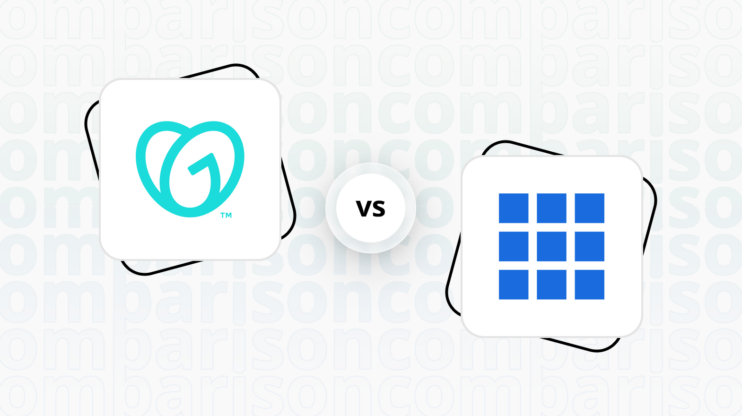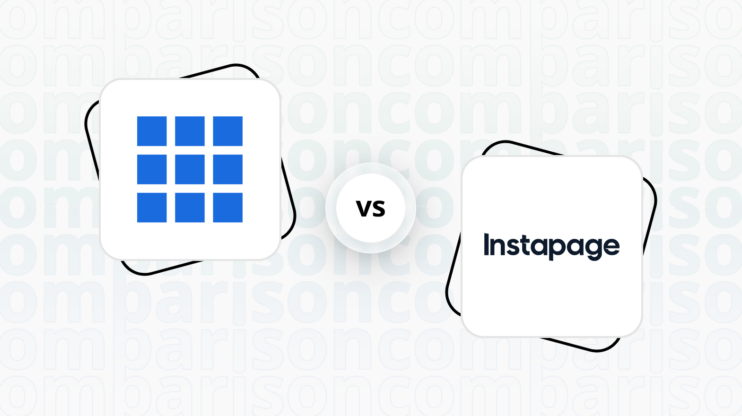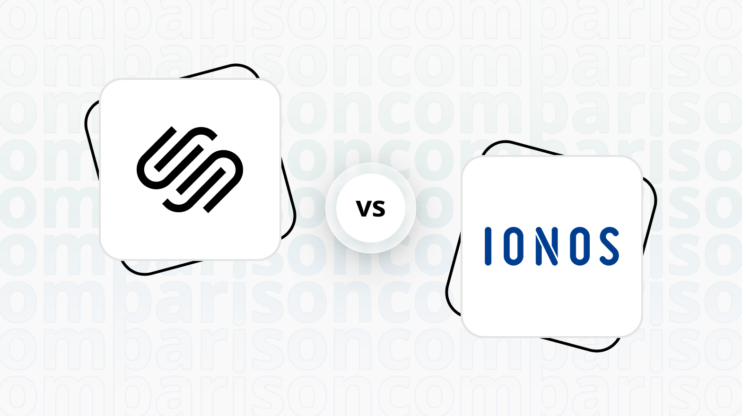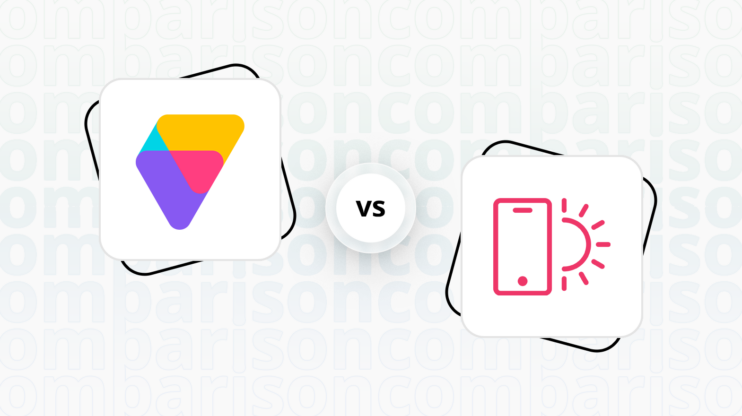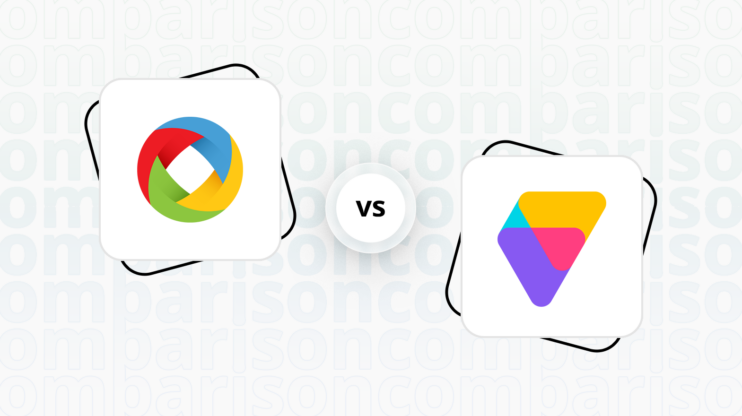Final verdict
Webflow and Unbounce both offer unique strengths, catering to different user needs and preferences.
-
Webflow (Overall Grade: 7.9/10)
excels in providing a comprehensive website building experience with powerful design tools, flexible CMS, and top-tier hosting services. It is ideal for professional designers and businesses looking for a robust platform to create custom, responsive websites. When comparing Webflow vs Unbounce, Webflow stands out for its advanced design functionalities, extensive customization options, and superior hosting quality. -
Unbounce (Overall Grade: 6.4/10)
is specifically designed for creating high-converting landing pages, popups, and sticky bars. It is favored for its user-friendly drag-and-drop interface and strong focus on optimizing conversion rates. In the Webflow vs Unbounce comparison, Unbounce is the preferred choice for marketers and businesses aiming to enhance their online campaigns with effective landing pages and integrated marketing tools.

|

|
|
|---|---|---|
|
Design functionalities & templates |
8.6 |
7.8 |
|
Ease of use |
7.5 |
8.2 |
|
Ecommerce |
8.5 |
4.8 |
|
Website Editors |
9.0 |
7.5 |
|
Product testing options |
6.3 |
6.6 |
|
Price |
8.0 |
7.0 |
|
Hosting quality |
8.9 |
3.9 |
|
Website speed optimization |
8.1 |
5.6 |
|
Plugins and integrations |
5.5 |
6.8 |
|
Marketing features |
7.8 |
7.4 |
|
Customer support |
8.3 |
7.7 |
|
Security |
7.8 |
8.4 |
|
AI capabilities |
8.3 |
7.5 |
|
User Management |
8.3 |
7.2 |
Best for ecommerce
 8.5
8.5
 4.8
4.8
Verdict
: Webflow is a more robust choice for ecommerce, offering extensive features and flexibility, while Unbounce is better suited for creating high-converting landing pages.
-
Webflow
: With a score of 8.5, Webflow excels in providing a comprehensive ecommerce solution. It offers a range of ecommerce themes, advanced product page customization, and seamless payment processing through integrations with Stripe and PayPal. Webflow’s platform is ideal for businesses looking to create and manage a fully functional online store with extensive customization options. -
Unbounce
: Scoring 4.8, Unbounce is primarily focused on optimizing conversion rates through custom landing pages. While it integrates with ecommerce solutions like Shopify and Ecwid, it lacks the depth and breadth of ecommerce-specific features found in Webflow. Unbounce is best for businesses that need high-converting landing pages rather than a full-fledged online store.
Best for informational & business websites
 8.6
8.6
 5.9
5.9
Verdict
: When it comes to creating informational and business websites, Webflow stands out as the superior choice due to its powerful design tools, flexible CMS, and top-tier hosting services. Unbounce, while excellent for landing pages and conversion optimization, falls short in comparison for broader informational website needs.
-
Webflow
: Webflow scores 8.6 in this category, making it a robust option for informational business websites. It offers a comprehensive solution with its responsive website builder, CMS, and hosting platform. Webflow’s powerful design tools and flexible CMS allow for the creation of custom, responsive websites without extensive coding knowledge. This makes it ideal for professional designers and businesses looking to establish a strong online presence. -
Unbounce
: Unbounce, with a score of 5.9, is specifically designed for creating high-converting landing pages, popups, and sticky bars. While it excels in optimizing conversion rates and offers a user-friendly drag-and-drop interface, it is not as well-suited for creating broader informational business websites. Unbounce’s focus on landing pages means it lacks some of the comprehensive design and CMS features that Webflow offers, making it a less versatile option for informational sites.
Detailed comparison
Design functionalities & templates
Design FunctionalitiesRepresents how well each platform allows for creative design and customization of websites.Score Components:
- Template Variety (30%): Range and quality of design templates.
- Customization (30%): Flexibility and options for design alterations.
- User Interface (20%): Ease and intuitiveness of the design process.
- Responsiveness (10%): Adaptability to different devices and screen sizes.
- Innovation (10%): Unique design features and tools.
 8.6
8.6
 7.8
7.8
🏆
Winner: Webflow.
If you’re looking for a platform that offers more creative control and a wide array of design features, Webflow is the preferred choice.
Webflow delivers a robust design experience with a diverse range of template and customization options. Boasting over 1000 pre-built templates covering various industries and website types, including free and premium options, Webflow ensures a constantly evolving library for users. Templates are categorized for easy browsing, considering industry, website type, style, and features. The design customization features include a visual drag-and-drop editor for real-time adjustments, fine-grained control over every aspect of the design, and the ability to inject custom code for advanced users seeking additional personalization and unique functionalities.
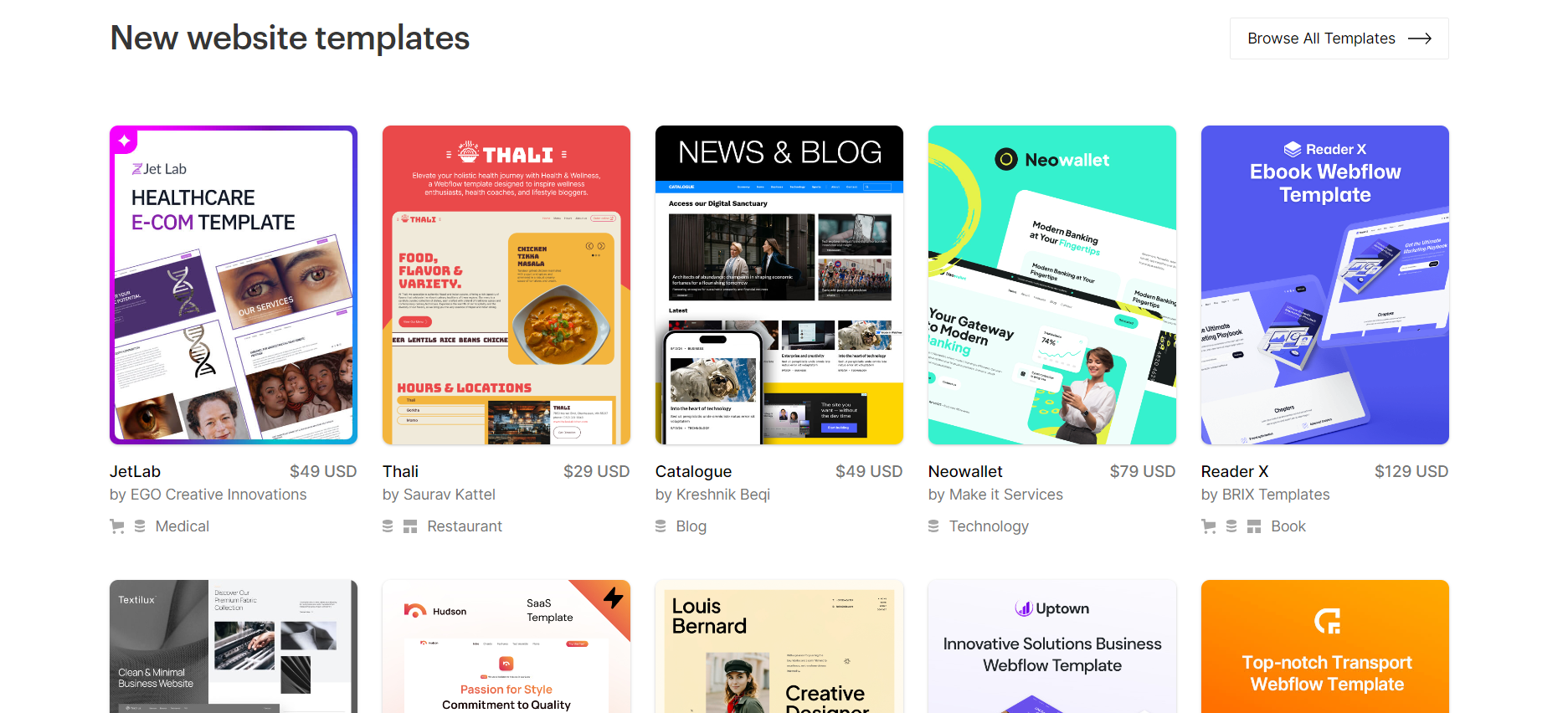
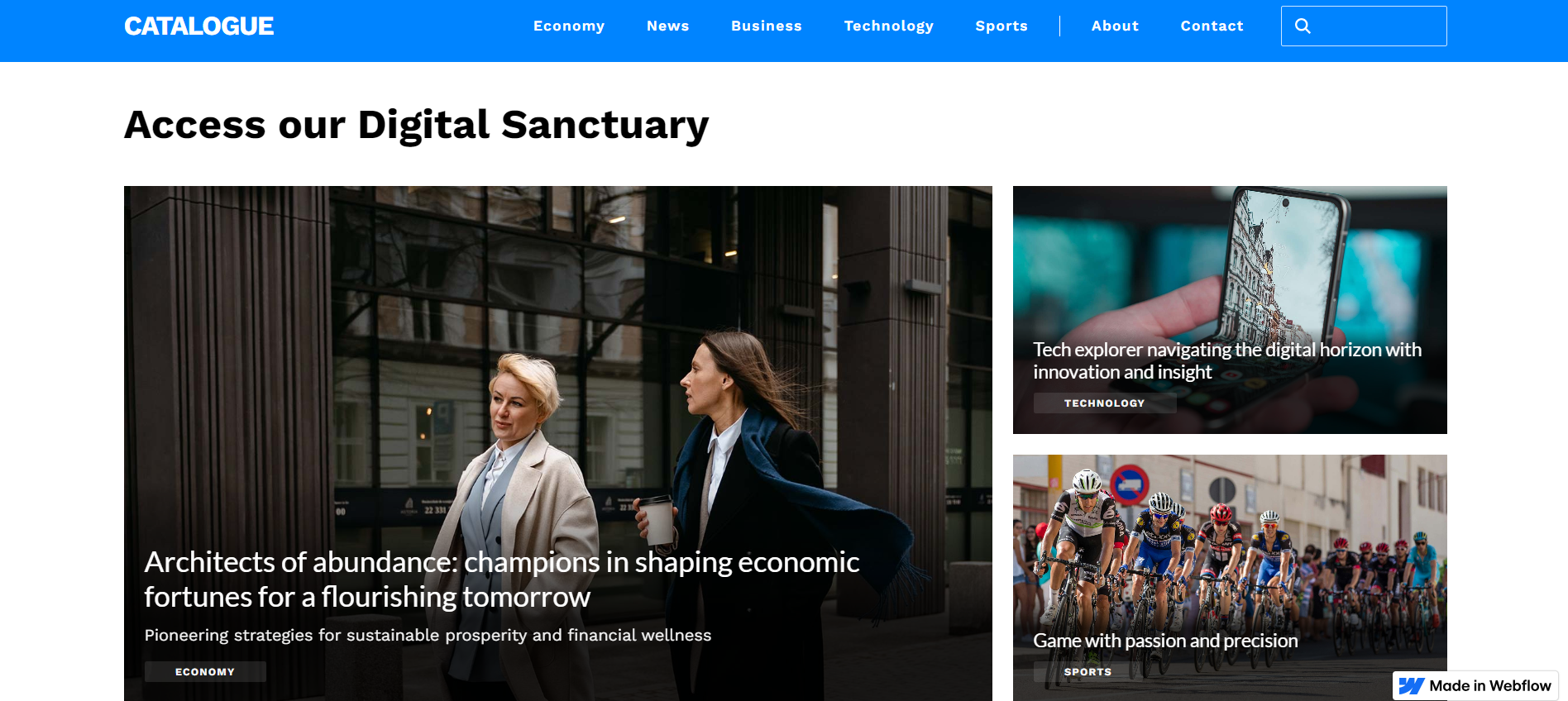
Compared to Webflow, Unbounce provides a gallery of over 100 high-converting templates for landing pages, popups, and sticky bars. These templates are designed with conversion in mind, incorporating knowledge and insights gained from Unbounce’s experience in optimizing landing pages. Users have the flexibility to choose from these ready-to-use templates or start with a blank canvas to create their own designs using Unbounce’s drag-and-drop builder.
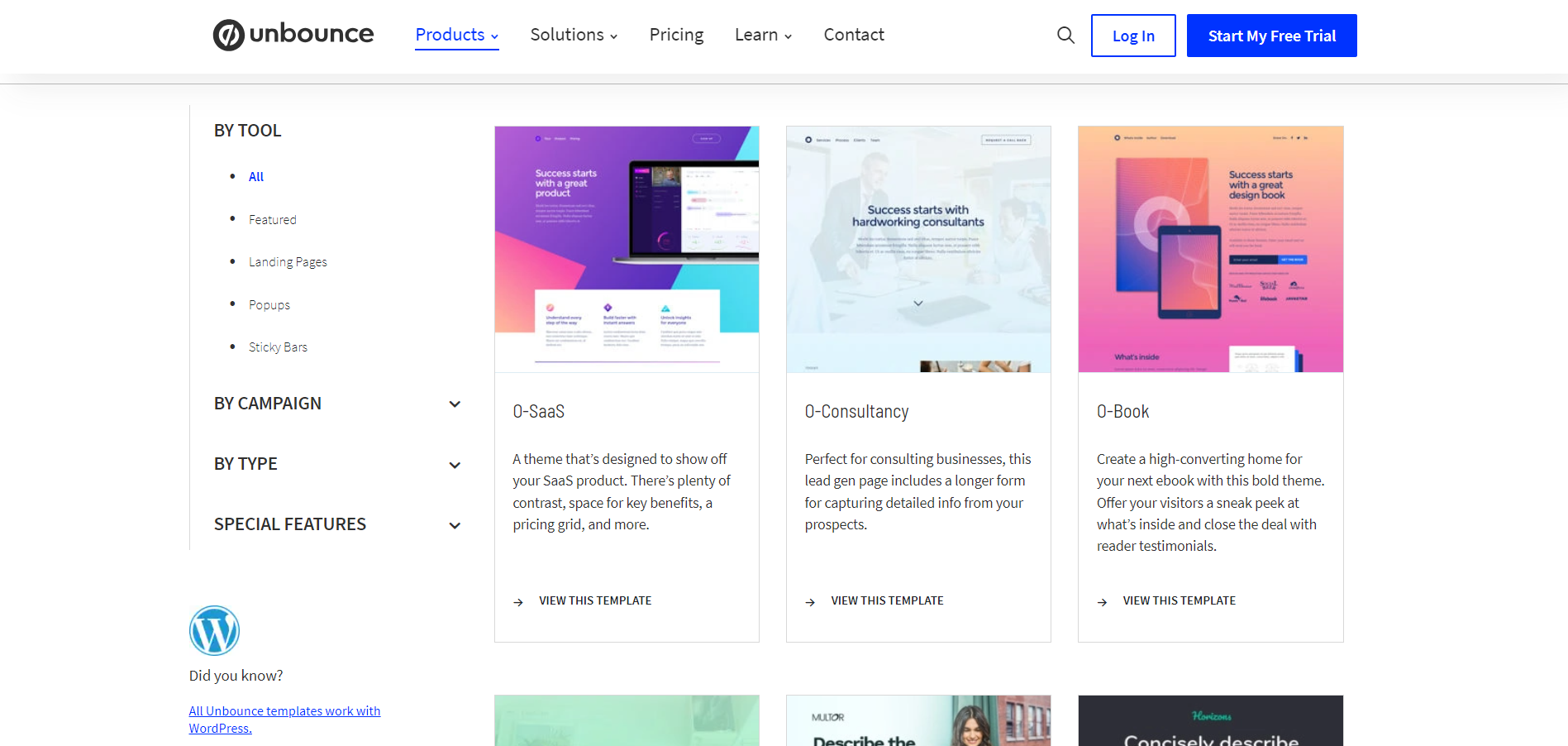
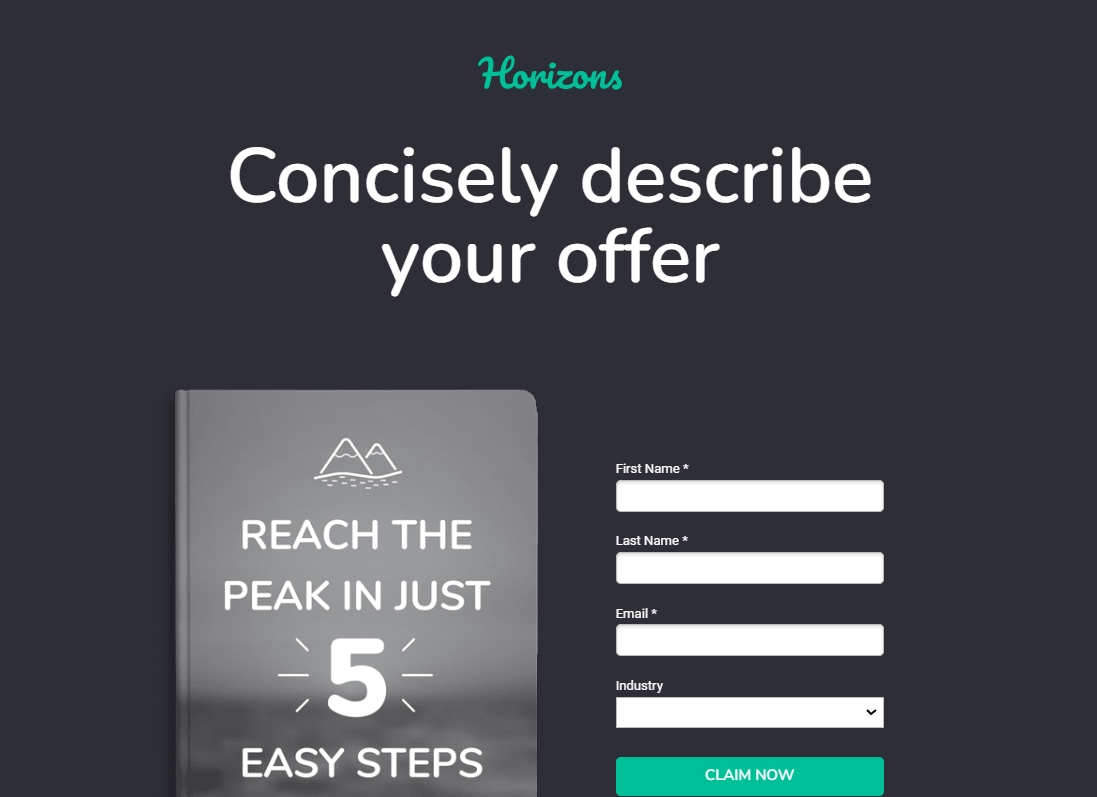
Get a head start on website creation with AI
Create a custom website tailored to your business needs 10X faster with 10Web AI Website Builder!
Ease of use
Ease of useReflects the platform’s overall user-friendliness.Score
Components:
- Learning curve (40%): Quickness and ease of getting started.
- Interface design (30%): Simplicity and intuitiveness of layout.
- User guidance (20%): Quality of tutorials and support.
- Flexibility (10%): Adaptability to various user skills.
 7.5
7.5
 8.2
8.2
🏆 Winner: Unbounce
. With a score of 8.2, Unbounce is acclaimed for its intuitive drag-and-drop builder and a wide selection of templates, making it easy for users to design and customize landing pages. Webflow, scoring 7.5, offers a visually intuitive interface with drag-and-drop features but has a steeper learning curve, especially for beginners. If ease of use is a priority, Unbounce is the clear winner in this category.
Learning Resources
Both platforms offer comprehensive learning resources. Webflow provides diverse courses and tutorials through Webflow University and its YouTube Channel, while Unbounce offers a rich collection of resources including a comprehensive Help Centre, the Unprompted Podcast for marketing insights, and a Video Library for visual learning.
For ecommerce
EcommerceMeasures the platform’s effectiveness in supporting online business activities.Score Components:
- Ecommerce themes and templates (20%): Variety and design of templates.
- Product management (25%): Ease of managing and organizing products.
- Payment options (25%): Variety and convenience of payment methods.
- Ecommerce features (20%): Features for managing an ecommerce store.
- Integration (10%): Compatibility with external e-commerce tools and services.
 8.5
8.5
 4.8
4.8
Webflow and Unbounce offer different approaches to ecommerce. Webflow provides a comprehensive solution for creating and managing online stores, while Unbounce focuses on creating highly optimized landing pages for ecommerce.

|

|
|
|---|---|---|
|
Ecommerce themes and templates |
7.5 |
2.0 |
|
Product page customization |
8.3 |
3.0 |
|
Payment processing and commissions |
7.8 |
6.5 |
|
POS capabilities |
6.5 |
0.0 |
|
Payment gateways |
8.0 |
7.0 |
|
Product numbers |
7.0 |
0.0 |
|
Additional ecommerce features |
7.9 |
4.5 |
Webflow ecommerce features:
- Checkout and Payment Processing with Stripe, PayPal, etc.
- Marketing and Promotions
- Tax and Shipping calculations
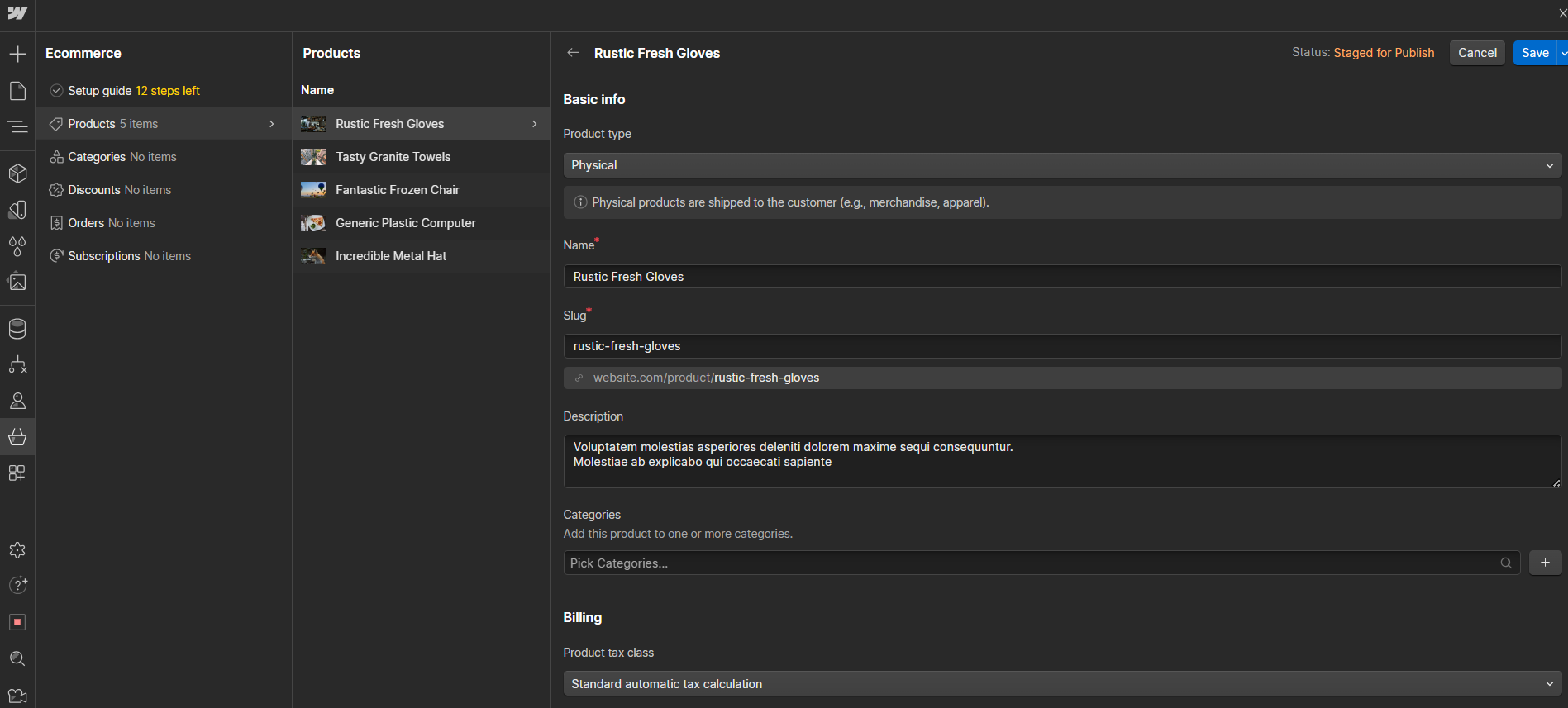
Unbounce ecommerce features:
- Shopify, Ecwid, or and other ecommerce solutions integration
Ecommerce themes & templates
Webflow offers a diverse range of ecommerce themes and templates designed to cater to various types of online stores, from fashion and technology to artisan crafts and children’s products. Each template comes equipped with built-in ecommerce functionality, allowing you to easily add products and manage your store without the need for coding. On the other hand, Unbounce primarily focuses on building landing pages, and does not have ecommerce specific templates.
Product page customization
Webflow offers extensive customization options for eCommerce product pages, allowing users to design and personalize their pages without coding. It provides tutorials for creating product pages from scratch, offers responsive templates for various devices, and allows users to add custom code and dynamic content using Webflow’s CMS for maximum customization flexibility. Unbounce does have the possibility to create or customize product pages, it’s primarily focused on building landing pages, with the possibility to integrate with ecommerce platforms such as Shopify or Ecwid.
Payment processing
When it comes to payment processing, Webflow provides a flexible and secure platform for payment processing and ecommerce through integrations with leading payment gateways like Stripe and PayPal. This allows users to accept a wide range of payments, including credit card transactions directly from their websites. Unbounce supports payment processing through an integration with Stripe, allowing users to create landing pages that can handle transactions directly, with Stripe facilitating global payments in over 135 currencies. Unbounce itself does not mention charging additional fees for transactions, implying that fees are subject to Stripe’s own pricing structure. The platform is focused on optimizing online conversions and does not offer Point of Sale (POS) capabilities, as its core features are designed for enhancing digital experiences such as landing pages and pop-ups.
Website Editors
Website EditorsEvaluates the platforms’ website building and editing capabilities.Score Components:
- Customization tools (40%): Range and power of editing features.
- Editor usability (30%): User experience within the editor.
- Design flexibility (20%): Freedom in layout and design changes.
- Update and maintenance ease (10%): Simplicity of updating and maintaining the site.
 9.0
9.0
 7.5
7.5
🏆
Winner: Webflow
. With a score of 9.0, Webflow’s editor is praised for its intuitive visual interface that simplifies the process of designing and editing responsive websites without requiring deep technical knowledge. It offers a perfect blend of ease of use for beginners and the flexibility for more advanced users, enabling significant cost savings by allowing users to customize and manage their sites without hiring professionals.
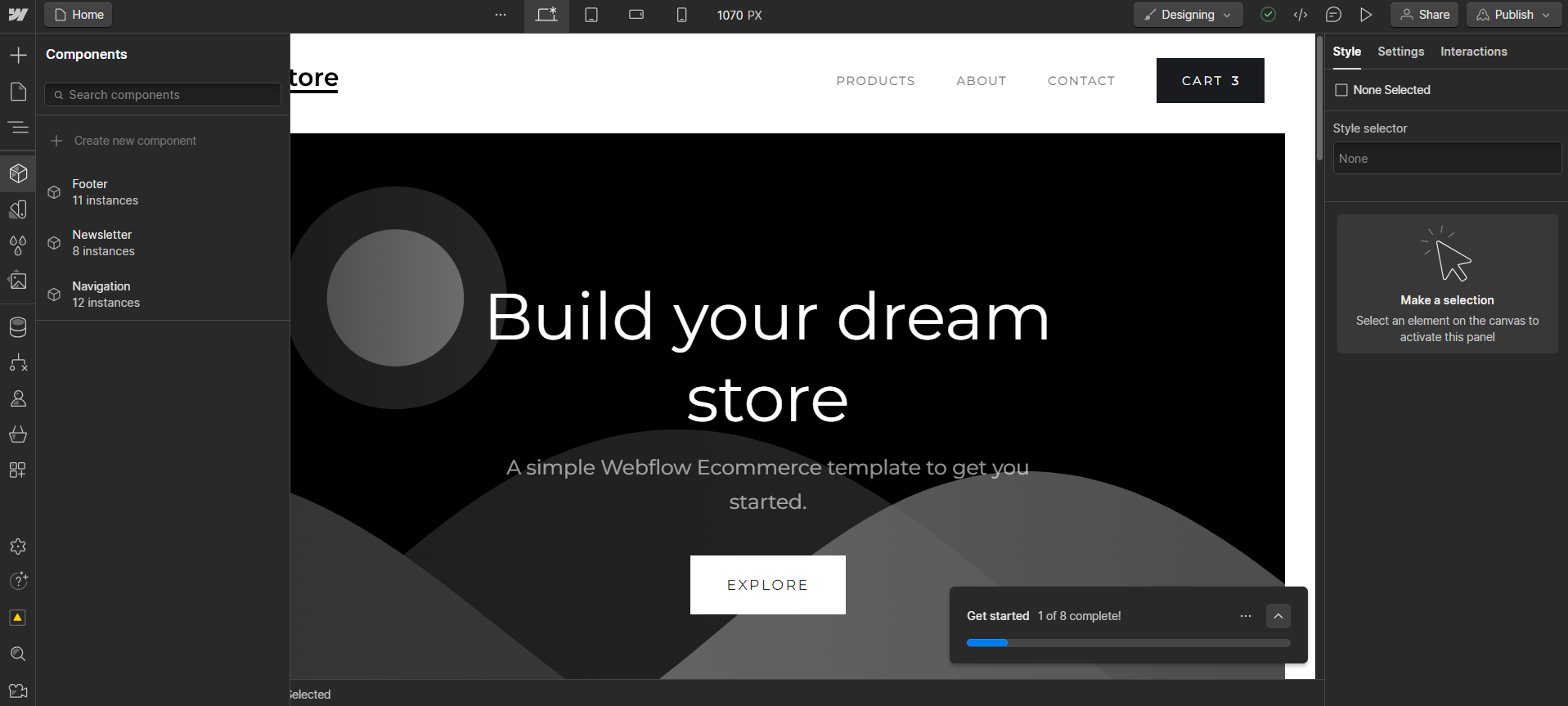
Unbounce’s editor, scoring 7.5, is equipped with a user-friendly drag-and-drop interface, enabling users to design and customize landing pages without the need for coding skills. It offers a variety of templates, widgets, and elements such as forms and buttons, alongside options for integrating custom HTML, CSS, and JavaScript for advanced customization. However, beginners might find the platform’s pricing steep and face challenges with support responsiveness and the limited template selection.
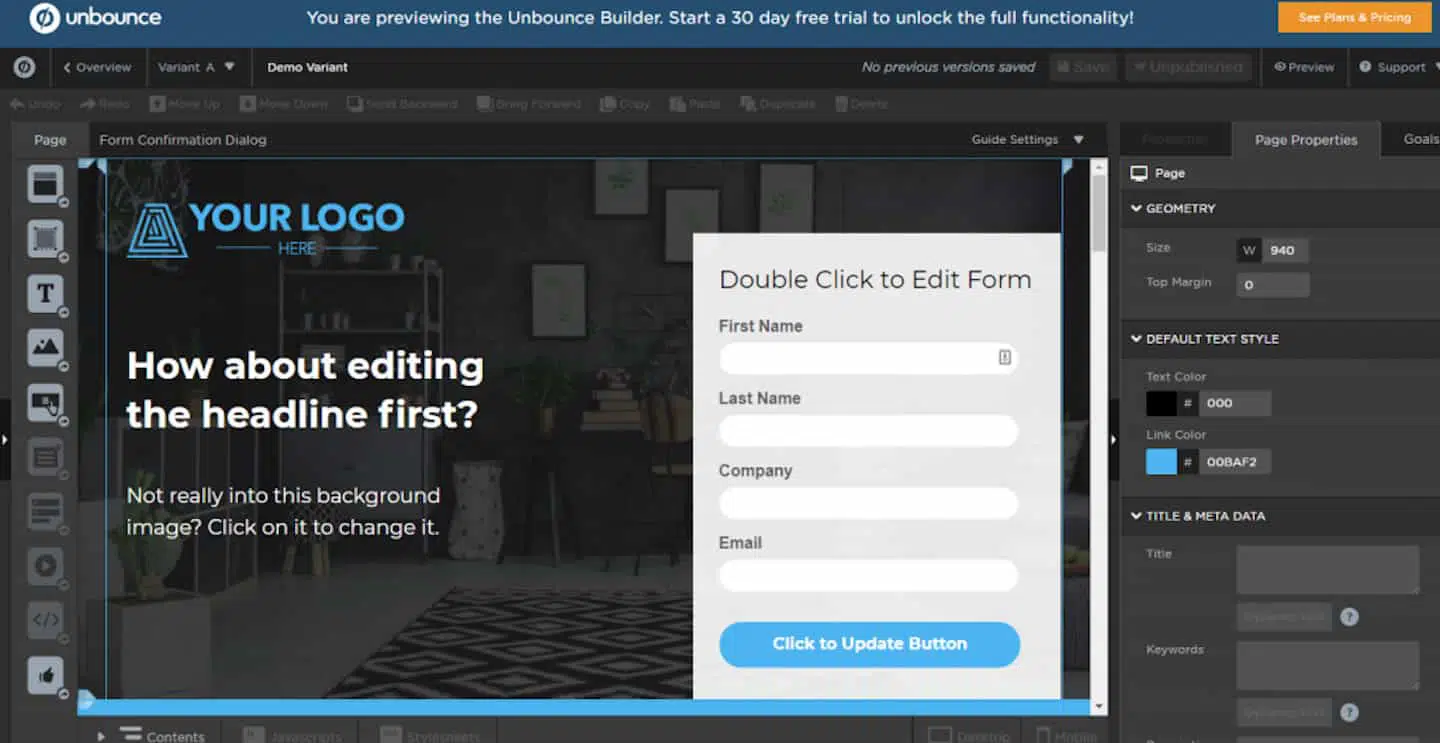
Mobile editor/app
 7.0
7.0
 0
0
🏆
Winner: Webflow
. Neither Webflow nor Unbounce offer an official mobile editor app. However, Webflow users have the option to use a third-party app called EditFlow, which is available only for iOS. This app was created by a community member specifically for Webflow users. On the other hand, Unbounce does not have a dedicated mobile editor app.
Therefore, based on the availability of a third-party app for Webflow and the mobile editor scores (Webflow: 7.0, Unbounce: 0), Webflow is the winner in this category.
Product testing options
Product Testing OptionsAssesses the options for trying out platform features before commitment.Score Components:
- Trial quality (40%): Extent and usefulness of the trial or free version.
- Feature accessibility (30%): How many features are available to test.
- Trial duration (20%): Length of the trial period.
- Ease of transition (10%): Smoothness of moving from trial to paid plans.
 6.3
6.3
 6.6
6.6
Overall Result
:
Unbounce wins
. Unbounce scores slightly higher than Webflow with a score of 6.6 compared to Webflow’s 6.3. Unbounce offers a 14-day free trial where users can test premium features, although billing information is required. Webflow, on the other hand, offers a free version where users can test some basic features, but does not offer a trial version or the possibility to test premium features.

|

|
|
|---|---|---|
|
Free Plan |
Yes |
No |
|
Trial Duration |
No |
14 days |
|
Testing Premium Features |
Basic features with free plan |
During 14-day free trial |
Price
PriceLooks at the cost-effectiveness and value for money of each platform.Score Components:
- Plan value (40%): What each pricing tier offers.
- Transparency and clarity (30%): Clearness of pricing structures.
- Flexibility of plans (20%): Range of options to suit different budgets.
- Hidden costs (10%): Additional expenses not included in the plan.
 8.0
8.0
 7.0
7.0
Webflow offers a wider range of plans, including a free option, while Unbounce focuses on conversion-optimized landing pages with a higher starting price.

|

|
|
|---|---|---|
|
Free |
Starter (Free): Limited features for new sites, including 2 static pages and 50 form submissions lifetime. |
No offering at this amount. |
|
$10-$20 |
Basic ($18/month): Suitable for simple sites with a custom domain, including basic SEO controls and 500 monthly form submissions. And 100 pages. Value for price: 6.5 |
No offering at this amount. |
|
$20-$30 |
CMS ($29/month): For content-driven sites with 2,000 CMS items, 1,000 monthly form submissions, and full API access. And 150 website pages. Value for price: 7.5 |
No offering at this amount. |
|
$40-$45 |
Standard ($42/month): For new businesses with up to 500 ecommerce items, includes basic ecommerce features, and 2% transaction fee Value for price: 8.5 |
No offering at this amount. |
|
$45-$50 |
Business ($49/month): High traffic capacity, advanced features like site search, and up to 10 content editors. Value for price: 8.0 |
No offering at this amount. |
|
$80-$100 |
Plus ($84/month): Higher volume businesses with 0% transaction fees, up to 5,000 ecommerce items, and advanced features. Value for price: 9.0 |
Build ($99.00/month): Provides tools for building and launching high-converting landing pages, unlimited pages, popups, sticky bars, a form builder, free hosting, AI copywriting, custom scripts, 1,000+ integrations, support for 1 root domain with unlimited subdomains, catering up to 20,000 monthly unique visitors. Value for price: 6.5 |
|
$100-$200 |
No offering at this amount. |
Experiment ($149.00/month): Includes everything in the Build plan plus unlimited A/B tests, advanced reporting, dynamic text replacement, support for 2 root domains, and up to 30,000 monthly unique visitors. Value for price: 7.5 |
|
$200-$300 |
Advanced ($235/month): Scalable solution for large online stores with up to 15,000 ecommerce items and the highest caps and 0% transaction fees. Value for price: 9.5 |
Optimize ($249.00/month): Adds to the Experiment plan with AI traffic optimization, visitor behavior insights, advanced targeting, supports 3 root domains, and caters to up to 50,000 monthly unique visitors. Value for price: 8.0 |
|
$600+ |
No offering at this amount. |
Concierge (Starting at $649/month): Offers everything in the Optimize plan plus dedicated support, implementation services, client and user management, flexible add-on plans for scaling, starting with 5 root domains and 100,000 monthly unique visitors, with options to scale. |
location. As a result in rare cases the prices displayed here can differ from the ones you see on their
websites.
Hosting quality
Hosting
qualityExamines the reliability and performance of the hosting solutions.Score Components:
- Uptime (40%): Consistency and reliability of website availability.
- Speed (30%): Loading times and performance.
- Bandwidth and storage (20%): Sufficiency of resources provided.
- Data centers (10%): Quality and distribution of hosting infrastructure.
 8.9
8.9
 3.9
3.9
Winner: Webflow
. Webflow offers managed hosting included in all of their plans, with a 99.99% uptime and an uptime guarantee for their Enterprise plan. They leverage a globally distributed network of data centers from Amazon Web Services (AWS) and Fastly. Unbounce, on the other hand, does not specify the type of hosting it provides and does not disclose the locations of its data centers. This lack of transparency results in a lower Hosting Quality score for Unbounce.

|

|
|
|---|---|---|
|
Do they offer hosting? |
Yes, included in all paid plans |
Yes, but does not specify the type of hosting |
|
Data Centers: |
Webflow doesn’t actually have its own data centers. Instead, it relies on a globally distributed network of data centers from Amazon Web Services (AWS) and Fastly |
Unbounce does not disclose the locations of its data centers |
|
Type of hosting: |
Managed Hosting |
The platform does not specify the type of hosting |
|
Uptime: |
99.99% |
99.96% |
|
Uptime Guarantee: |
Only Enterprise plan, 99.99% |
No |
Website Speed Optimization
Website Speed OptimizationEvaluates optimization of website loading timesScore Components:
- PageSpeed Score (30%): Google’s score indicating performance optimization.
- Loading Time (30%): The average time until a website is fully interactive.
- Mobile Optimization (15%): Optimization effectiveness for mobile devices.
- Resource Optimization (15%): Optimizing images, scripts, and other heavy resources.
- CDN Usage (10%): Use of CDN to enhance speed across geolocations.
 8.1
8.1
 5.6
5.6
🏆 Winner: Webflow
Both Webflow and Unbounce have strategies in place for website speed optimization, but Webflow’s comprehensive approach and better performance scores give it the edge in this category.

|

|
|
|---|---|---|
|
Focus |
Custom Cache Settings, Custom Element Lazy Loading, Automatic Minification, Responsive templates, CDN |
Image optimization, Caching, Speed Booster |
|
Performance Tools |
Google Lighthouse, PageSpeed Insights |
Google PageSpeed Insights |
|
Key Strategies |
Custom Cache Settings, Custom Element Lazy Loading, Automatic Minification, Responsive templates, CDN |
Image optimization, Caching, Speed Booster |
|
Load Times |
Below 2 seconds average |
Varies depending on optimization and website complexity |
|
Page Speed Scores Range |
77.2/100 |
Varies depending on optimization and website complexity |
|
Core Web Vitals Improvement |
Improving components’ usability, and emphasis on LCP, FID and CLS |
No information provided |
Webflow’s approach to website speed optimization includes custom cache settings, custom element lazy loading, automatic minification, responsive templates, and a content delivery network (CDN). These strategies, combined with an average load time of below 2 seconds and a PageSpeed score of 77.2/100, make Webflow a strong contender in terms of website speed. Additionally, Webflow is focused on improving components’ usability and the Core Web Vitals (LCP, FID, and CLS).
On the other hand, Unbounce’s strategies for speed optimization include image optimization, caching, and a Speed Booster. However, Unbounce does not provide specific information on their load times, PageSpeed scores, or Core Web Vitals improvements, making it difficult to compare their performance to Webflow’s.
Get a head start on website creation with AI
Create a custom website tailored to your business needs 10X faster with 10Web AI Website Builder!
Plugins and integrations
Plugins and integrationsMeasures the range and effectiveness of additional plugins and integrations.Score Components:
- Variety of options (40%): Range of available add-ons.
- Integration smoothness (30%): Ease of integrating plugins into the site.
- Quality of plugins (20%): Functionality and reliability of the options.
- Custom integration capabilities (10%): Support for custom or third-party integrations.
 5.5
5.5
 6.8
6.8
🏆 Winner: Unbounce.
Unbounce scores 6.8, offering a wide array of free apps and integrations to enhance the functionality of landing pages. Webflow, with a score of 5.5, doesn’t have plugins or extensions in the traditional sense but offers a built-in library of website elements and functionalities. It also integrates with a number of third-party services and tools that can add even more functionality to your website. However, Unbounce’s focus on optimizing conversion rates and its wide range of free integrations give it the edge in this category.
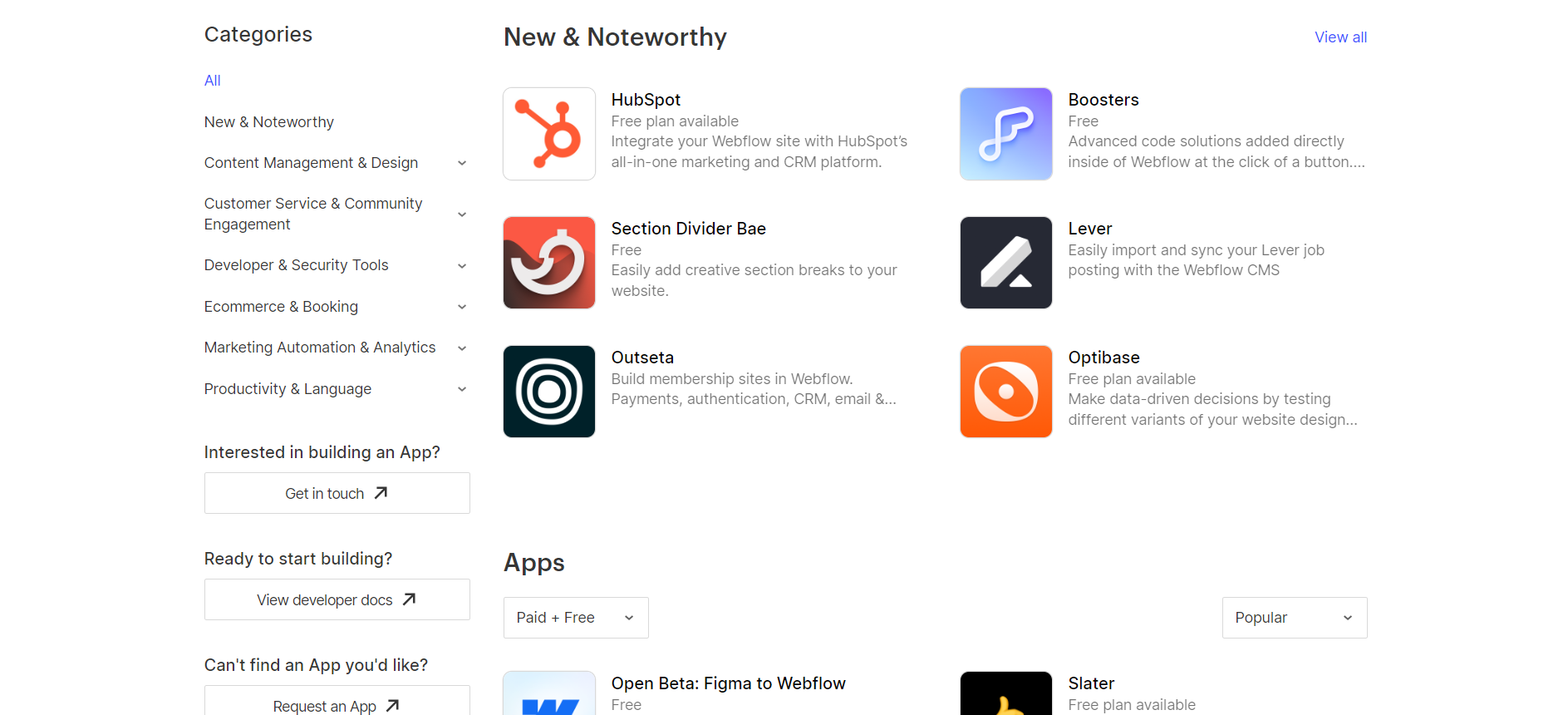

Marketing Features
Design FunctionalitiesRepresents how well each platform allows for creative design and customization of websites.Score Components:
- Template Variety (30%): Range and quality of design templates.
- Customization (30%): Flexibility and options for design alterations.
- User Interface (20%): Ease and intuitiveness of the design process.
- Responsiveness (10%): Adaptability to different devices and screen sizes.
- Innovation (10%): Unique design features and tools.
 7.8
7.8
 7.4
7.4
🏆
Overall Winner: Webflow
. Webflow stands out for its comprehensive marketing tools, especially in SEO, email marketing, and analytics. Unbounce, while lacking in blogging, excels in creating high-converting landing pages and offers robust third-party integrations.

|

|
|
|---|---|---|
|
SEO Tools |
|
|
|
Email Marketing |
|
✓ (with third-party integrations) |
|
Blogging |
|
✗ |
|
Social Media Integration |
Simplifies content sharing and audience engagement |
Supports refined targeting and retargeting |
|
Analytics and Reporting |
Integrates with Google Analytics |
Comprehensive insights into user interactions |
|
Ads and Promotions |
Supports ad management through Google Optimize |
Tailored for creating ads and promotions |
Customer Support
Customer supportEvaluates the quality and availability of support options.Score Components:
- Response time (40%): Speed of support responses.
- Support quality (30%): Effectiveness and helpfulness of the support.
- Availability (20%): Range of support channels (phone, chat, email).
- Resource richness (10%): Quality of self-help and educational materials.
 8.3
8.3
 7.7
7.7
🏆 Winner: Webflow
. In the Webflow vs Unbounce comparison, Webflow takes the lead with a customer support score of 8.3. Webflow offers 24/7 support through live chat, email, and a community forum, ensuring users can get help at any time. Additionally, Webflow provides extensive documentation and video tutorials, making it easier for users to navigate the platform and resolve issues independently.
Unbounce, with a customer support score of 7.7, provides a variety of support options, including live chat, email, and phone support. However, live chat and phone support are only available Monday to Friday, from 6 AM to 6 PM PST. Unbounce does offer 24/7 support through its Help Centre, Community, and Chat Bot, ensuring users have access to assistance outside of business hours. Despite this, the limited availability of live support channels places it behind Webflow in terms of overall customer support.
Security
SecurityLooks at the platforms’ security measures and data protection.Score Components:
- Data protection (40%): Safeguards for user and customer data.
- SSL and encryption (30%): Implementation of secure connections.
- Compliance (20%): Adherence to industry security standards.
- Regular updates (10%): Frequency of security updates and patches.
 7.8
7.8
 8.4
8.4
🏆
Winner: Unbounce
. Unbounce takes the lead in security with a score of 8.4, compared to Webflow’s 7.8. Unbounce’s commitment to maintaining high security standards is evident in its PCI Level 4 Merchant status, GDPR adherence, robust disaster recovery strategies, and regular external security audits. The platform employs a secure, multi-tenant environment with strict access controls and daily data backups to safeguard customer information.
Webflow, while not as highly scored, still provides robust security measures. These include SSL encryption, regular security audits and updates, strong password requirements for user accounts, and two-factor authentication. However, Unbounce’s comprehensive security framework and higher score give it the edge in this comparison.
AI Capabilities
AI capabilitiesMeasures the effectiveness of AI-driven features and tools.Score Components:
- Automation efficiency (40%): Impact of AI on streamlining processes.
- Personalization (30%): AI-driven customization for users or customers.
- AI-Assisted design (20%): Role of AI in website design and functionality.
- Data analysis (10%): Use of AI in interpreting user data and analytics.
 8.3
8.3
 7.5
7.5

|

|
|
|---|---|---|
|
Personalized Design |
|
Unbounce’s Smart Builder offers personalized templates and design recommendations |
|
SEO Optimization |
|
|
|
Customer Behavior Analysis |
|
Unbounce’s Smart Traffic directs visitors to the most appropriate landing page variant |
|
Sales Predictions |
|
|
|
Inventory Management |
|
|
|
Content Generation |
|
Unbounce’s Smart Copy assists in generating various types of content |
🏆 Winner: Unbounce
. Unbounce, with a score of 7.5, utilizes AI to optimize landing page creation, generate content, and intelligently direct visitors to the most appropriate landing page variant. These features make building landing pages faster and more efficient, and enhance conversion rates.
Webflow, with a score of 8.3, does not currently have AI capabilities but has announced plans to introduce them in the future. These include AI-customized templates, an AI copilot for faster design creation, and AI-powered content management capabilities. While these features are promising, they are not yet available for users.
User Management
User ManagementAssesses the platforms’ capabilities in managing user roles, permissions, and accessibility.Score Components:
- Role Customization (40%): Flexibility in creating and defining user roles and
permissions. - Ease of Management (30%): User interface and tools for managing users.
- Access Control (20%): Effectiveness of access control measures for different user
levels. - Scalability (10%): Ability to manage a growing number of users efficiently.
 8.3
8.3
 7.2
7.2
🏆 Winner: Webflow
. Both Webflow and Unbounce offer different levels of user management, but Webflow’s more extensive role-based permissions and unlimited editors on certain plans give it an edge.
- Webflow’s Core, Growth, and Enterprise plans offer unlimited editors, while others limit content editors to 3 or 10 per site. Access levels include Designer for full access and Editor for content editing. Workspace roles like Admin, Designer, and Editor ensure collaboration and security through features like the Site Activity Log and role-based permissions.
- Unbounce offers one staff account on its basic plan, with the option to expand up to 15 accounts on the premium plan. It also provides customizable permissions, enabling you to restrict or grant access based on roles such as viewer, author, and administrator.
Webflow User Roles and Access Levels:
| Role | Description | Access Highlights |
|---|---|---|
| Workspace Owner | Full control over Workspace settings and member management. | Edit settings, manage billing, access/edit all sites, invite/remove members, manage permissions. |
| Workspace Admin | Similar to the owner with some restrictions. | Edit settings, manage billing, access/edit all sites, invite/remove members (except owner), manage permissions. |
| Workspace Member | Limited control focused on site interaction. | Download invoices, access/edit sites, invite members. |
| Workspace Guest | Temporary collaborators with limited access. | Access/edit sites. |
| Workspace Commenter | Limited to commenting for feedback on sites. | Create/view/resolve comments, preview sites. |
| Site Admin | Full control at the site level. | Manage permissions, delete/transfer sites, billing management, design and publish changes. |
| Can Design | Design capabilities with some restrictions on publishing. | Design in Designer, create/modify classes and components, publish changes with permission. |
| Can Design (Limited) | Restricted design capabilities for Enterprise customers. | Create new classes, modify created classes, limited publishing capabilities. |
| Can Edit | Content editing without full design privileges. | Edit text/links/images, manage assets, publish Collection items and Ecommerce products. |
| Can Comment (Site Level) | Commenting for feedback at the site level. | Create/view/resolve comments, preview sites. |
Unbounce User Roles and Access Levels:
| Role | Description | Access Highlights |
|---|---|---|
| Viewers | Members of your team who want to view and approve pages, popups, or sticky bars before publication. | Can access pages, popups, sticky bars, stats, and leads. Cannot edit/manage pages or access account management, billing details, domains, or add users. |
| Authors | Designers or copywriters invited to edit landing pages. | Can edit, manage, publish/unpublish pages, popups, sticky bars. Have access to viewing leads and stats. Cannot access account management, billing details, domains, or add users. |
| Administrators | Manage the Unbounce account, including billing details. | Can edit, manage, publish/unpublish pages, popups, sticky bars. Can access account management, billing details, domains, and add users. Cannot delete leads or remove other Admins. |
Additional Features

|

|
|
|---|---|---|
|
SSL Certificate |
|
|
|
Custom Domain |
|
|
|
Free Custom Domain Included |
|
|
|
International Domains |
|
|
|
Mobile Responsive |
|
|
|
Page Speed |
|
|
|
Website Builder Mobile App |
|
|
|
Convert a Website To An App |
|
|
|
Website Analytics |
|
|
|
Multilingual Sites |
|
|
|
Multiple Users |
|
|
User Feedback
Webflow receives high praise for its user-friendly interface, eliminating the need for coding while offering extensive design flexibility. Users appreciate its scalability, cost-effectiveness, and seamless integration of essential features like forms and CMS. However, some users note a slight learning curve and occasional limitations, particularly in ecommerce functionalities and content management. Overall, Webflow proves to be a powerful tool for building and managing websites, offering robust features for both beginners and experienced developers, albeit with some room for improvement in certain areas like collaborative editing and content management.
The reviews for Unbounce reveal a mixed sentiment among users. On the positive side, many appreciate its user-friendly, drag-and-drop page builder, which facilitates the quick creation and editing of landing pages without the need for technical expertise. Users find it beneficial for A/B testing, integrating with CRMs, and swiftly turning around marketing content. However, there are notable concerns, particularly with a case of unexpected switch to an annual plan without consent and refusal to refund, indicating potential issues with customer service and billing practices. Additionally, some users mention technical limitations, such as responsiveness issues and the absence of global elements for content updates across multiple pages, which can hinder efficiency.
The making of this blog
We followed a clear, step-by-step process to write and research this article.
FAQ
What are the main differences between Webflow and Unbounce?
Which platform is better for ecommerce, Webflow or Unbounce?
Can I use Unbounce for building a full website?
How do Webflow and Unbounce compare in terms of ease of use?
Which platform offers better customer support, Webflow or Unbounce?
Are Webflow and Unbounce suitable for beginners?










